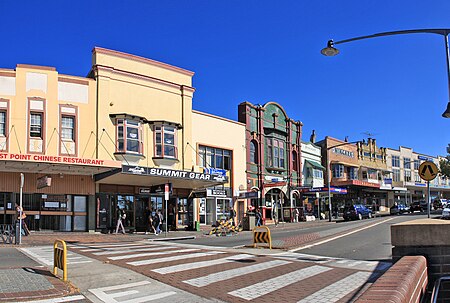Katoomba, New South Wales

Katoomba is the chief town of the City of Blue Mountains in New South Wales, Australia, and the administrative headquarters of Blue Mountains City Council. The council's understanding is that Katoomba is located on the lands of the Dharug and Gundungurra Aboriginal peoples. Katoomba is situated on the Great Western Highway, Katoomba is also known as a suburb of Greater Sydney but is known as a town which is home to the three sisters, 102 km (63 mi) west of Sydney Central Business District and 39 km (24 mi) south-east of Lithgow. Katoomba railway station is on the Main Western line.Katoomba is a base for bush and nature walks in the surrounding Blue Mountains. At the 2016 census, Katoomba had a population of 7,964 people.
Excerpt from the Wikipedia article Katoomba, New South Wales (License: CC BY-SA 3.0, Authors, Images).Katoomba, New South Wales
Great Western Highway, Sydney
Geographical coordinates (GPS) Address Nearby Places Show on map
Geographical coordinates (GPS)
| Latitude | Longitude |
|---|---|
| N -33.71 ° | E 150.31 ° |
Address
Great Western Highway
Great Western Highway
2780 Sydney
New South Wales, Australia
Open on Google Maps








